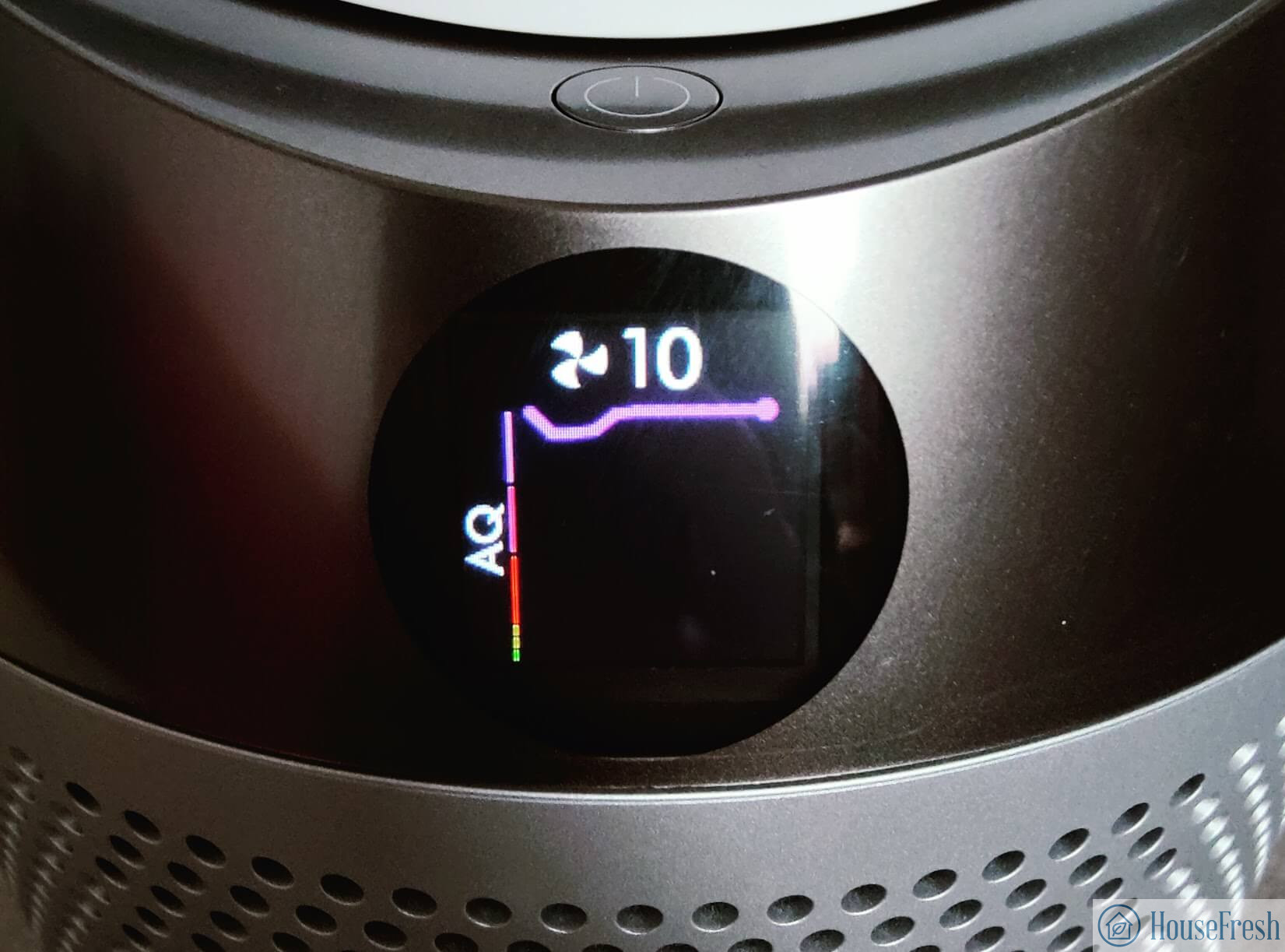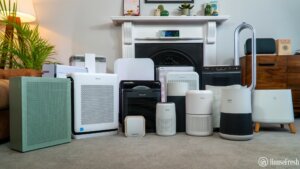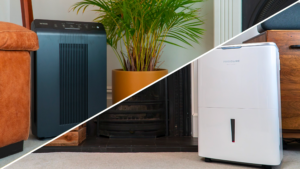You may have heard the word “formaldehyde” but never really been sure what it is, or where it’s found. Yet it’s present in many areas of your home, such as sideboards, curtains, and even cosmetics.
We’ll give you the low-down on how to check for it in all areas of your home. We’ll also explore the various health risks associated with formaldehyde, including coughing, wheezing, and even cancer.
While the facts may seem worrying, the good news is that there are plenty of things you can do to reduce and remove formaldehyde. Keep reading for our advice on how to keep your home safe.
What is formaldehyde?
If you’re keen on assembling your own furniture, then you’ll be familiar with the overpowering odor that can emanate from the box. This is the unmistakable scent of formaldehyde. Often described as having a “pickle-like” smell, formaldehyde is a colorless gas that is regularly used in the making of building materials, as with your new closet or cupboard.
Formaldehyde can be both manufactured and also occur naturally. The metabolic processes of most living organisms produce it, although only in small quantities. It’s when formaldehyde is at room temperature that it actually becomes a gas and then forms part of a larger group of chemicals known as volatile organic compounds (VOCs).
Once exposed to the air, formaldehyde quickly breaks down. The same is also true when it comes into contact with water as it dissolves easily. It’s during the process of dissolving in water that formaldehyde becomes known as formalin.
Yet how much formaldehyde are we actually exposed to? Well, inhaling the fumes and/or smoke is the main way we can become exposed. When in liquid form, however, it gets absorbed into our skin. It’s also possible to consume it in small amounts by eating food or drinking fluids containing it.
Formaldehyde is usually present both inside and outside your home. However, the quantity is believed to be low for both locations, for example, less than 0.03 parts per million.
How can formaldehyde affect my health?
While some people are predisposed to the health effects of formaldehyde, other individuals may be more tolerant and have little or no reaction. For those people who are susceptible, this may be attributed to their natural allergic sensitivity to airborne formaldehyde.
Whereas other individuals may develop a sensitivity due to overexposure or as a result of an underlying health condition.
As the main source of formaldehyde exposure is through inhalation, people with asthma may be more vulnerable to its effects. Equally, young children, pregnant women, and elderly people may be more affected if they inhale it in just small amounts.
When present in the air at levels higher than 0.1 parts per million (ppm), health effects may include:
- Burning sensations of the eyes, nose, and throat
- Wheezing
- Coughing
- Watery eyes
- Dizziness
- Headaches
- Nausea
When found in consumer products, such as cosmetics and lotions, formaldehyde can cause an allergic reaction in the skin (also known as allergic contact dermatitis). This can lead to an uncomfortably itchy red rash that may become raised or develop sore blisters.
According to the American Cancer Society, “Exposure to formaldehyde has been shown to cause cancer in laboratory test animals.” Similarly, when individuals have been exposed to relatively high amounts of formaldehyde, for example, in medical and work settings, this has been linked to some types of cancer in humans.
However, the effect of exposure to formaldehyde in small quantities is less clear. Various national and international agencies have studied and evaluated the potential for formaldehyde to cause cancer:
📄 The National Toxicology Program (NTP) have stated that formaldehyde is “known to be a human carcinogen”.
📄 Part of the World Health Organization (WHO), the International Agency for Research on Cancer (IARC) has classified it as “carcinogenic to humans”. There is evidence that formaldehyde causes nasopharyngeal cancer (a type of head and neck cancer) in humans.
📄 The Environmental Protection Agency (EPA) has categorized formaldehyde as a “probable human carcinogen.”
📄 The National Institute for Occupational Safety and Health advises that formaldehyde “be handled as a potential occupational carcinogen”.
What causes formaldehyde in your home?
While formaldehyde can be found in work settings such as hospitals (often used as a disinfectant) and funeral parlors (during the process of embalming), it may also be all around our homes.
We’ve already mentioned the existence of formaldehyde in building materials, and these include pressed-wood products such as plywood, hardwood, MDF, and particleboard. It may also be found in laminate flooring.
Alongside manufactured wood products, formaldehyde is known to exist in various household items and beauty products, including:
- Glue
- Paint
- Dishwashing liquids
- Fabric softeners
- Cosmetics
- Shampoo
- Paper products
- Fertilizers and pesticides
Formaldehyde may be added to food as a preservative, yet it may also be produced as a result of cooking, for example, via gas stoves. Tobacco smoke is another major cause of formaldehyde in homes, as the gas is produced when smoking. It can therefore be particularly high in homes with smokers, and also those with open fireplaces.
While living in a newly built home is great for eco-living and insulation, the downside means that less air is moving in and out of the home. Unfortunately, a lack of ventilation can result in formaldehyde staying in the air for longer. This can be especially apparent in homes built after 1990, according to the Agency for Toxic Substances and Disease Registry.
Formaldehyde is not only found in new building materials, but may also be present in permanent press fabrics, too. This means things like your new curtains, draperies, and sofa upholstery.
Fortunately, the levels of formaldehyde in products decrease over time. Yet, it can take two years for it to be fully released.
Common sources of formaldehyde in each room of the house
You’ve probably already gathered by now that formaldehyde can be found in almost every area of your home. However, try not to be too alarmed as we’ve broken down how to check specific rooms in your home for evidence.
| Room | Common Formaldehyde Sources | Good to know |
|---|---|---|
| 🍳 Kitchen | – Paper grocery bags and towels – Walls, floors, and cabinets – Gas stove | Thankfully, this area may contain less formaldehyde than other places as there may not be too much new furniture that goes into your kitchen. |
| 🛋️ Living room | – Sofas, side tables, and coffee tables – Walls and floors – Candles and air fresheners – Fireplaces | The living room tends to be a busy environment which also means that it may get aired out frequently. As we mentioned, ventilation is crucial for improving air quality and therefore reducing exposure to formaldehyde. |
| 🚽 Bathroom | – Toilet paper – Shampoo – Body wash – Cosmetics like nail polish, make-up, and hairspray | Rather than furniture, you’ll find that most traces of formaldehyde in your bathroom are in your personal products. Yet instead of listing it as “formaldehyde,” products may describe it as “formalin” or “formic aldehyde”. |
| 🛏️ Bedroom | – Paint on the walls – Carpet adhesives on the floor – Nightstand and bed frame – Closet and dresser | While this is the ideal place for you to relax and recharge, there are some products in this area that may contain formaldehyde. |
While it’s unlikely that your home will have dangerous levels of formaldehyde, you might need to get your home tested if you can still smell intense chemical odors.
Equally, if you have breathing problems or skin irritation only when at home. Be sure to hire a qualified professional who will be able to offer guidance on what to do next.
9 ways to lower formaldehyde levels in your home
While it’s understandable to be concerned about formaldehyde, the good news is that there are many ways you can reduce the levels of it.
Let’s have a look.
1. Get the air circulating
This applies to all rooms in your home simply because increased ventilation significantly reduces levels of formaldehyde. Open windows for a few minutes every couple of days to create a cross breeze around your house. If you have fans, turn these on too. Opening windows is especially important when using products like paint and nail polish remover.
2. If you smoke, designate a smoke-free area
Remember that tobacco smoke also affects those who don’t smoke. If you can smoke outside, this will help to reduce levels for everyone enormously. Even better if you can give up completely!
3. Ensure products go off-gas
The term off-gassing basically means the chemicals, such as formaldehyde, that come out of products. If you buy new furniture, allow them to sit unwrapped outside your living area for a few days. This enables items such as closets and tables to release formaldehyde before you use them. A garage or patio outside is ideal, but if these aren’t available, you could inquire whether the store could house the product in their warehouse.
4. Keep on top of humidity
Both heat and humidity can increase the rate at which formaldehyde is released. Aim to keep the temperature and humidity inside your home at the lowest setting that’s comfortable for you.
5. Wash clothing and fabrics before wearing and using them
“Wrinkle-free clothing” sounds great, but formaldehyde is one of the chemicals manufacturers use to create such items. Just one wash should be enough to remove residual chemicals. Be sure to also wash new bedding, blankets, and towels as well.
6. Look out for new products with low or no formaldehyde
When you’re shopping, remember that prevention is effective protection against formaldehyde. Be vigilant for products that meet ultra-low emitting formaldehyde (ULEF) requirements, and that also contain no added formaldehyde (NAF). Items labeled “No VOC” or “Low VOC” are your best bet for limiting exposure to volatile organic compounds.
7. Use an exhaust fan when cooking
If you cook with a gas stove, it’s important to use the fan as this will help to reduce and dissolve the formaldehyde that gets released during cooking.
8. Look out for “green” toilet paper
Obviously we all need to use toilet paper and can’t stop using it completely! But greener versions may be made without formaldehyde.
9. Replace paper grocery bags with reusable ones
Swapping paper towels for washable cloths can also help to decrease levels of formaldehyde in your home. Just don’t forget to wash them before use as per tip 5.
Can an air purifier get rid of formaldehyde?
As ventilation is one of the key ways to reduce formaldehyde in your home then using an air purifier can significantly help to circulate and clean the air. But how does it do this? Essentially, purifiers work through a combination of filters and a fan. Particles such as dust, pollen, and smoke become trapped in the filters, while the fan circulates the air.
Okay, but how do they actually get rid of formaldehyde? Well, it’s all down to a particular type of filter that contains the powerful ingredient of activated carbon. Due to a process called adsorption, in which odors and gasses stick to the outside of the carbon, volatile organic compounds such as formaldehyde are effectively captured. As a result, clean, purified air is then distributed back into your home.
While activated carbon is relatively cheap to produce, it does have a short lifespan. It’s therefore important to replace filters regularly, Otherwise, when the activated carbon is saturated with adsorption or becomes heated and damp, there may be a risk of secondary formaldehyde being released.
Keep in mind that the more activated carbon a system contains, the better it’ll be at removing gasses such as formaldehyde. Units with at least five pounds are the most effective.The choice of purifiers on the market can be a bit overwhelming, but we’ve got your back. Our favorite air purifiers with activated carbon filters are below:
Final thoughts
While formaldehyde may exist in virtually all homes, fortunately, the levels are low in most cases. Furniture, cosmetics, and paint are some of the most common culprits. It’s important to be aware of the health problems associated with formaldehyde, such as coughing, headaches, and nausea. In some cases, formaldehyde has been linked to cancer.
Yet once you know about the risks, then you can take steps to remove and reduce levels in your home. Ventilation, letting products go off-gas, and washing clothing and fabrics before use are key. Equally, an air purifier with an activated carbon filter can significantly reduce levels and help to put your mind at ease for you and your family.
SOURCES
- Agency for Toxic Substances and Disease Registry. (2016). Formaldehyde in Your Home: What you need to know. atsdr.cdc.gov
- American Cancer Society. (2022) Formaldehyde. cancer.org
- Ashton, D. (2022). HouseFresh. What Does an Air Purifier Do? housefresh.com
- Booth, D. (2022). HouseFresh. How Does an Activated Carbon Filter Work? housefresh.com
- Centers for Disease Control and Prevention. (2014). Formaldehyde: Evidence of Carcinogenicity. cdc.gov
- Diane B. (2021). Sylvane. Should You Be Worried About Formaldehyde? sylvane.com
- Environmental Protection Agency. Formaldehyde. epa.gov
- Environmental Protection Agency. What should I know about formaldehyde and indoor air quality? epa.gov
- Home Air Check. (2022). Formaldehyde Exposure. homeaircheck.co.uk
- National Toxicology Program. (2021). Report on Carcinogens, Fifteenth Edition. ntp.niehs.nih.gov
- Oncology Times. (2004). IARC Classifies Formaldehyde as Carcinogenic. journals.lww.com
- SimPure. (2022). Can Air Purifiers Remove Formaldehyde? simpurelife.com
- Vanvuren, C. Molekule. (2018). Formaldehyde in Your Home: Where, What, and How. molekule.com
Last update on 2024-04-25 / Affiliate links / Images from Amazon Product Advertising API






